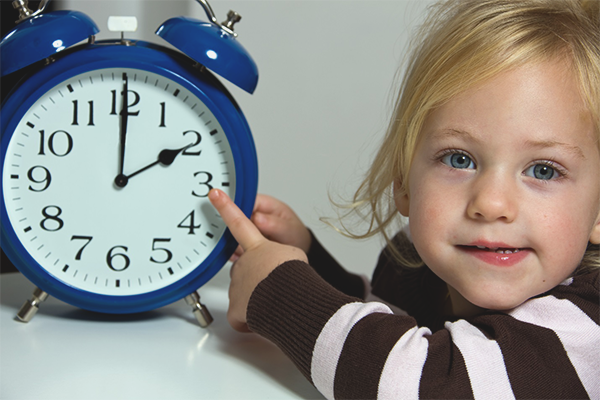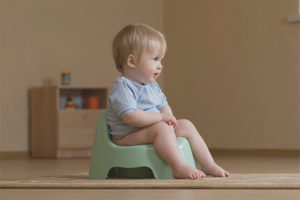The content of the article
Parents are the guides of the child in this complex and diverse world. In nature, any parents teach their young life skills. Animals will certainly teach the crumbs of patience, show how to get their own food, how to protect themselves from danger. The task of man is also not simple. Today, it is not enough to teach your baby to walk, hold a spoon, dress on his own and take care of himself. The modern world dictates its own conditions - in order for a baby to grow up to be full-fledged and competitive, he must learn a lot from his early childhood. And one of the most necessary skills is the ability to determine the time by the clock, orient in time, be aware of time intervals, etc. In this article we will talk about when to teach a child to recognize time, and also consider the most simple but effective teaching methods.
When to teach a child to determine time by hours
For a child, time is an incomprehensible and abstract concept, which in most cases does not mean anything. That is, when mom says “no time” - this is understandable, but where to get it and where to get it is completely unclear. Acquaintance with time begins after two years, when a child begins to master such simple concepts as Today, Tomorrow, Evening, Morning. It is very important to explain to your child what the past, present and future are. Yesterday we built a snowman - this time has passed and nothing has changed in the past. Now we are building a pyramid - this is what we are doing right at the moment. Tomorrow we will go to the theater - this is the future that will come in one day. Having these basic concepts, the baby will be at least a little oriented in a temporary space.
But the clock is a much more serious mechanism, familiarity with which should take place in about 5-7 years. It is advisable to teach your child to navigate by the hour before he goes to school. After all, when visiting a school, knowledge of hours is extremely necessary. But before you begin to study the clock, be sure to make sure that the kid knows the numbers and numbers. This is what a child should know to be ready to determine the time by the hour.
The kid should be able to count up to 100, know the principle of counting - first tens, then units.
The child must visually know the numbers - at least from one to 12. He should immediately call the number that he sees in front of him.
The child should be able to write these numbers (1-12), know their sequence.
The child should know such spatial concepts as “before” and “after”. That is, you need to explain to him that before he goes out, he needs to get dressed, and after he finishes the walk, he will have lunch.
Learning will be much simpler and easier if the baby is familiar with concepts such as half and quarter. It is quite simple to explain with the example of an apple - just cut it in half, and divide one half into two parts. To make it easier for the child to later learn the principle of the clock, you can cut the halves and quarters from the circle.
If you decide to start teaching a child, remember that children perceive hearing information poorly enough, they need to touch, touch, check.For this, be sure to buy or make a mock-up of the dial with two hands and numbers on it. You can make a double dial - mark minutes at the bottom, and hours at the top. Cut the segments so that the upper values can be bent and see the number of minutes.
Classes should not be difficult, painful and long. But they must necessarily be regular. Children forget everything quickly and without repetition your efforts will become useless. Practice every day for 10-15 minutes, it will be enough for a child to be fully oriented in time and hours in a couple of weeks. Do not force your child - violence will only reject him, there will be no desire to learn, which means that all your efforts will also remain in vain. By the way, you can interest the child by buying him a beautiful and fashionable wrist watch. This is a great incentive to understand how they work.
How to prepare for studying hours
To make the kid more clearly represented the clock, you need to have an excellent understanding of other time intervals.
The child must be free to understand the seasons, to accurately know their characteristics.That is, winter - snow, New Year, skiing, playing snowballs and building a snowman. Spring - trees are blooming, snowdrops are growing, and icicles are melting. Summer is a swimming pool, berries and fruits, ice cream, hiking in the forest. Autumn - leaves fall, birds fly to warm lands, etc.
It is necessary to teach the child all the names of the months - he should know what time of year a particular month falls.
Explain to your baby that a month can consist of 31, 30, 28 or 29 days, tell the child about it.
Teach him a concept like a week. Tell us that in a week there are 7 days, in each of which we do something planned. For example, from Monday to Friday the child goes to kindergarten, Saturday and Sunday - the days off that we spend with the family.
Tell your child what a day is, how many hours are in them, how many minutes are in each hour. It is worth noting that at the initial stage it is better not to sharpen the time in seconds, so that the baby does not get confused in too large amounts of information. When he begins to deal well with the hour and minute hand, you can introduce him to the second.
How to teach a child to determine the time of the clock
In the learning process, it is important to understand that you need to act consistently - from simple to complex.
Show the dial that you prepared. Tell that the minute hand moves faster than the hour, because the minute passes much faster than an hour. Show that when the minute hand goes one full turn, the hour moves only by an intermediate division.
Tell your child about the simple clock. That is, when he goes to bed, pay attention to the time - the big hand is on the number 12, which means that the minutes in an hour are over. So, you need to pay attention to the hour hand - it indicates the number 9. This means that we go to bed at 9 o'clock. In the first stage, specify only the integer values of the clock.
When the child asks what time he will watch cartoons, tell him the exact time, for example, seven hours. Let him try to set the time you indicated on his model clock.
So that the baby doesn’t lose interest, you can show him how many different hours there are in the world - sunny, sand, cuckoo clocks, etc. You can learn different rhymes about watches.
Focus on the time in which the same actions are repeated daily.For example, in the morning we leave home for kindergarten and work at 8 o'clock, dad arrives in the evening at 6 o'clock, lunch starts at 1 o'clock, sleep takes two hours, etc.
You can draw on the three positions of the clock - for example, 7 hours, 4 hours and 10 hours. Sign under each dial: 7 o'clock - rise, 4 o'clock - sports section, 10 o'clock - going to bed. This will force the child to pay more attention to the hours and time, besides, sleep will not be a surprise for the baby, he will be morally prepared for it. In general, such experiments and adherence to a particular regime make the child more organized, collected and responsible.
When the child clearly understands the meaning of whole hours, you can explain the minutes to him and tell him what it means to half past two. That is, the hour hand is between the numbers 2 and 3, which means that it is no longer two hours, but not yet three. If the minute hand is at 30 minutes (and 30 minutes is half an hour), then the time sounds like half past two. If a child first says “thirty minutes to three” - there is nothing terrible in this, he just perceived the information, do not correct it, because this is also correct. Then, gradually, he will learn to use words - half, a quarter, etc.
When the pussy well understands the meaning of the hour and minute, you can introduce it to the second hand. Explain to the child that the second hand is intended for short periods of time. This can be shown by example. Ask the child if he can run to the kitchen and back in a minute, will he be able to comb his hair or collect toys? Note the time and try to complete the prepared task. Be sure to pay attention to how the minute and hour hands moved, while the second one made one full turn on the dial.
Subsequently, when the kid masters the mechanical watch well, you can acquaint him with the electronic ones, tell him how they work and why they have more than 12 numbers. By all means, practice your child - you call it a quarter past one, and he should set the numbers 1:15 . In the same way and vice versa - you name the numbers, and he puts this time on the usual dial.
So, gradually and in stages, you will be able to engage the child in the fascinating world of hours and time. Remember that the best training is a game in which new information is received with interest and enthusiasm. Teach your child numbers and hours not only at certain times of class.Do it all the time, regularly return to this topic - after all, we resort to the question of time dozens of times a day.
Do not forget that time is a value that cannot be returned, and it will depend only on you how your child will treat this valuable resource.
Video: learn to understand time by the hour












To send